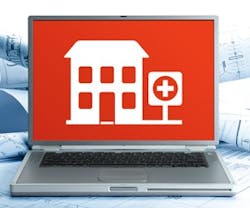Health Care Reform for Health Care Design
Health care reform is now the law of the land. While most of us probably have opinions about what this means for our families, our communities, and our nation, I wonder how many of you have thought about what it means to our profession.
What does adding 30 million+ people to the nation’s health care system mean for the built environment? And how will that affect the way we practice? I recently turned to Rosalyn Cama to find out. Cama is the current chair of The Center for Health Design’s board of directors; author of Evidence-Based Healthcare Design (John Wiley & Sons 2009); past national president of ASID; and has a full-time practice dedicated to health care. I.e., if anyone knows about health care design, it’s Cama.
Our conversation was interesting, as always, and she emphasized three key points: first, it’s too soon to know how the A&D industry will be affected; second, that doesn’t keep the experts from speculating about where the growth (and there will be growth) occurs; and third, evidence-based design (EBD) will lead the way.
The speculation? We could see an increase in family medicine clinics as feeders to hospital systems. We could see a decrease in physician-owned practices and growth toward provider models like Group Health Cooperative of Puget Sound (Washington) or Kaiser Permanente (California) whose physicians are employees of the system rather than independent business people. This in turn could generate an increase in the development of medical office buildings. And/or, we might see more focus on the development of urban care centers to serve previously uninsured populations. Any (perhaps all) of these scenarios are possible—each with a specific set of challenges and opportunities that point toward design specialization.
In the meantime, what we do know, says Cama, is that regardless of what health care reform has in store, the practice of EBD is increasingly valuable.
“The motivators that continue to impact health care are wrapped around how to deliver safe, efficient, effective health care,” explains Cama. “Health care providers want the magic bullet that allows them to deliver a higher quality of care in an efficient economic model. The health care designer who has a greater chance of being contracted to do the work is the one who can approach a facilities team—who in turn must present to a board of directors—with design interventions that demonstrate a quantifiable return on investment.”
According to The Center for Health Design, “Evidence-based design is the process of basing decisions about the built environment on credible research to achieve the best possible outcomes.”
Cama further explains, “EBD is an iterative decision-making process that begins with the analysis of current best evidence from an organization as well as from the field. At the intersection of this knowledge, EBD finds behavioral, organizational, or economic clues that, when aligned with a stated design objective, can be hypothesized as a beneficial outcome. EBD does not provide prescriptive solutions; rather, it is a platform from which to add knowledge or launch innovation.”
Perhaps most importantly, as she states in her book, “EBD espouses an ethical obligation to measure outcomes and share knowledge gained for particular design successes and failures, ideally in a peer-reviewed fashion, as is common in academia.”
Although EBD emerged in the health care arena, I suggest it is not the only area in which it is practiced. Credit the LEED certification process, for example, for making more and more businesses and organizations of all kinds aware of exactly much how a particular design solution contributes to, say, energy use reductions or productivity gains. My point? EBD is not a health care thing—it’s a design thing—and it’s even more valuable when money is tight because it offers clear cost/benefit rationale to decision-makers.
As a result of the economic downturn, I have used this column to encourage designers to expand their knowledge and to position themselves well for the recovery … whether it’s through sector specialization like design for aging or the adoption of new practice methodologies like sustainable or evidence-based design. But whether you choose one or all of these, or something else altogether, it will be time well spent while the economy recovers and the country gets comfortable with the meaning of health care reform.
Check out The Center for Health Design (www.healthdesign.org) for resources related to EBD and health care design. You will also find valuable information and Research Summaries on the InformeDesign Web site (www.informedesign.umn.edu). The ASID publication, The Healthy Home, addresses the application of EBD and health care design practices in residential settings. ASID UNi, the Society’s online professional development site, offers courses in health care design and EBD. (Go to the ASID Store on the Society’s Web site)
ASID president Sari Graven is the director of planning and resource development at Seattle University’s Facilities Services. ASID can be reached at (202) 546-3480 or [email protected], and on the Web at www.asid.org.
